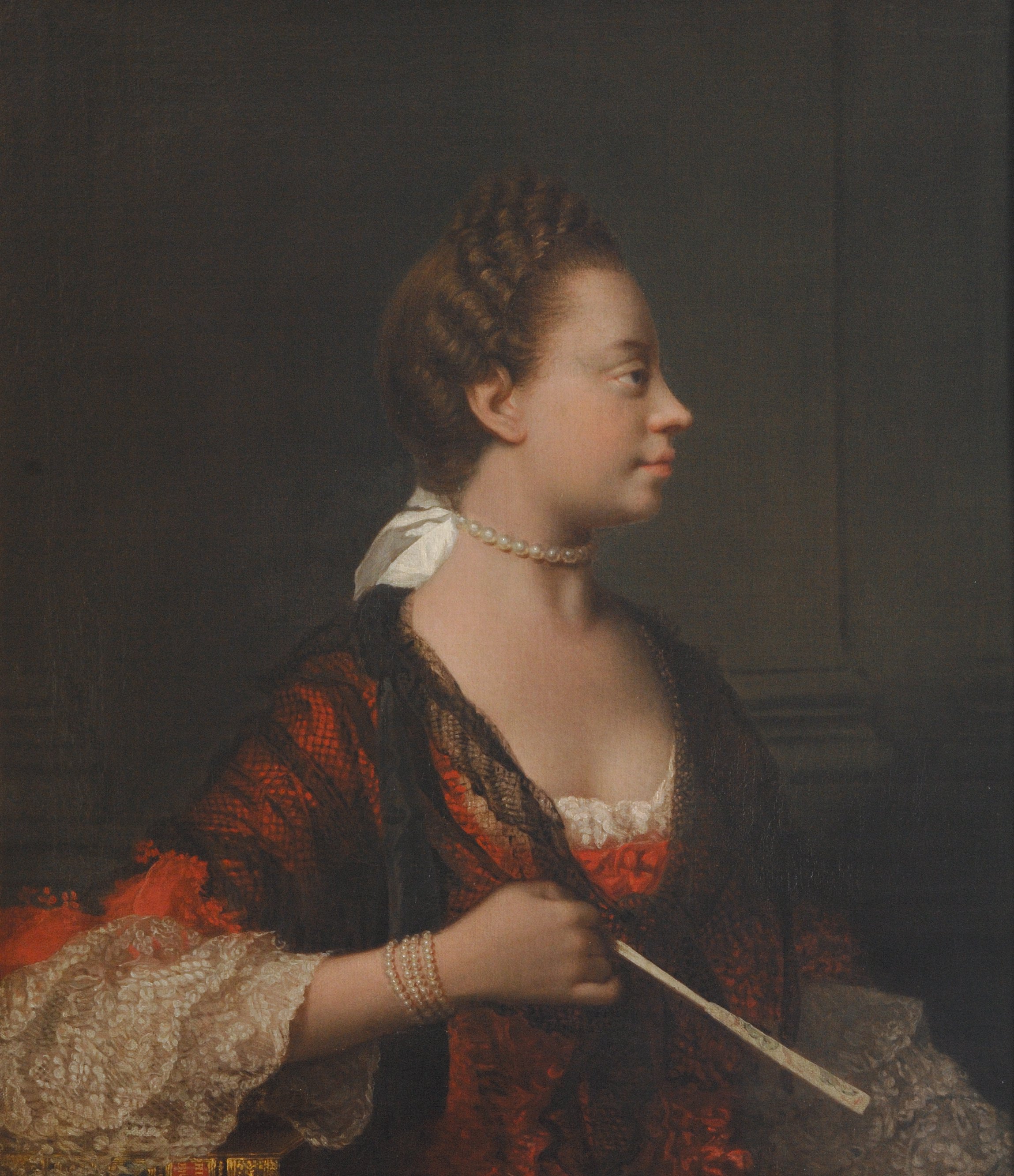23. Portrait of Queen Charlotte Sophia, by Allan Ramsay
 Portrait of Queen Charlotte Sophia, by Allan Ramsay, H 74.9 x W 62.2 cm, oil on canvas
Portrait of Queen Charlotte Sophia, by Allan Ramsay, H 74.9 x W 62.2 cm, oil on canvas
The art collections of
Oxbridge colleges are strange creations, growing slowly over centuries, to no
consistent plan. Often, the more interesting pieces end up in our possession by
an accident of history. Allan
Ramsay’s portrait of Queen Charlotte Sophia, painted soon
after her marriage to George III in 1761, is a case in point. Along with
Ramsay’s portrait
of George III himself, it was a present from the royals
to Samuel Dennis, the then President of St John’s, soon after their visit to
Oxford in 1785 to attend St Giles’ Fair right in front of the college. Dennis
seems to have been quite a courtier: in 1763, for example, he wrote a
rather indifferent poem for the birth of the Prince of
Wales, the future George IV.
The portrait was admired
at the time as an example of Ramsay’s ability to convey the ‘mental part’, and
particularly of his mastery of female portrait. ‘Mr. [Joshua] Reynolds seldom
succeeds with women, Mr. Ramsay is formed to paint them’, was the opinion of
Horace Walpole. A pupil of Reynolds, James Northcote, is recorded by Hazlitt to
say (not without a barb at Ramsay): ‘I have seen a picture of his of the Queen soon after she was married—a
profile, and slightly done: but it was a paragon of elegance. She had a
fan in her hand; Lord how she held that fan! It was weak in execution and
ordinary in features, but the farthest possible from anything like vulgarity. A professor might despise it, but in the
mental part I have never seen anything of Vandyke’s equal to it. I could have
looked at it for ever. I don’t know where it is now: but I saw enough in it to
convince me that Sir Joshua was right in what he said of Ramsay’s great
superiority.’
It is also part of the
story of how a German princely family (and the Queen, an immigrant in Georgian
England, remained very German), reinvented itself as quintessentially British.
The book under her elbow is a ‘History of Britain’, and there are unmistakable echoes of George III’s famous
words in his accession speech to Parliament: ‘Born and educated in this
country, I glory in the name of Britain.’
This is on the surface,
but there is more. The interest in
this German-born Queen has recently reached fever pitch with Netflix’s Bridgerton, in which she is portrayed with the perfect amount of
aristocratic charm and general disdain by Guyanese-British actor Golda
Rosheuvel. Can this portrait
help uncover the mystery of whether she was the UK’s first black queen?
A theory gaining currency
recently, but first advanced by the Jamaican-American author J.A.
Rogers in 1940, suggests that Queen Charlotte’s distant
ancestry through the Portuguese royal dynasty included Black Africans. ‘Ordinary
in features’: does this convey more? Is this veiled, arguably subconscious,
racial prejudice? ‘The nostrils spreading too wide; the mouth has the same
fault’, was Horace Walpole’s sneering assessment of the queen when he first saw her. ‘The
English people did not like me much, because I was not pretty’, remarked
the Queen herself. Opinion is divided; the same Walpole,
after all, stressed how pale the Queen was, and his overall description was not
unfriendly. Ramsay’s portraits, known for their fidelity to the original, are
at the centre of this debate. You can form your opinion for yourself, but it is
not difficult to see how Rogers could know ‘a little [Black] musician, whose
features, especially the mouth, is strikingly like hers’. Whatever Walpole’s
impression and the truth of her ancestry, Queen Charlotte definitely does not
look pale in Ramsay’s portrait.
An
abridged version of this blog has been published as part of the Guardian’s
Great British Art Tour series here.
View
the painting on Art UK here.
 Dr Georgy Kantor, Tutorial Fellow in Ancient History and Keeper of the Pictures
Dr Georgy Kantor, Tutorial Fellow in Ancient History and Keeper of the Pictures